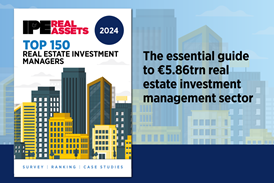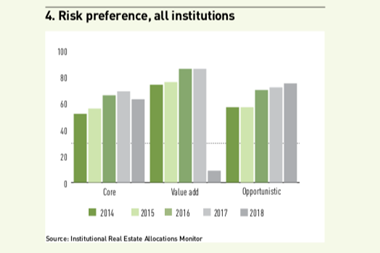Global institutional investors are expected to allocate $80bn (€72bn) to $120bn of capital to real estate over the coming years as demand for the asset class reached a seven-year high.
According to the latest report from Hodes Weill & Associates and Cornell University’s Baker Program in Real Estate, despite ”concerns about asset valuations and weakening economic growth”, the appetite for commercial real estate among institutions has reached its highest level since 2013 – the year in which the survey was first conducted.
This marks the second straight year that confidence in the asset class has increased after five years of steady decline, the report said.
The report – which surveyed 212 institutions managing a total of $12.3trn assets comprising a $1.1trn real estate portfolio – revealed that the uptick in conviction is contributing to continued growth in target allocations, which increased to 10.5% in 2019.
This reflects a 10bps increase year-over-year and a 160bps increase over the seven-year period.
It also implies the potential for an additional $80bn to $120bn of capital to be allocated to real estate over the coming years.
“However, annual increases to target allocations appear to be moderating, as this year’s growth marked the lowest increase since the survey’s inception,” the report said.
The research showed that public and private pensions representing 35% and 23%, respectively, have the highest actual allocation to real estate. Endowments and foundations accounted for 29% and insurance companies represented 7% while sovereign wealth funds and government agencies have the lowest at 6%.
Douglas Weill, managing partner at Hodes Weill & Associates, said: “Globally, we’re in a yield-starved environment, and real estate has proven to be one of the few asset classes where investors can still find yield without exposure to excessive risk.
“This is the primary reason why we’re seeing a flight to safety in real estate. However, there remains a significant amount of dry powder on the sidelines as good investments become harder to find – which could explain why institutions remain meaningfully under-invested relative to target allocations.”
Dustin Baker, director of the Baker Program in Real Estate at Cornell University, said real estate is an important and growing allocation in institutional portfolios.
“Despite concerns about late-cycle risk, real estate fundamentals – including supply and demand trends – remain broadly favourable.
“This has been driving strong returns, which in turn is contributing to continued liquidity in the asset class.”











